I don’t like drip coffee, but I love espresso. This is annoying, because espresso is a huge pain to do correctly at home, and because espresso culture is the far deep end of coffee culture and an onerous subject to make a hobby out of. Pulling a cafe-quality shot at home is an expensive proposition, and getting a halfway decent machine under a thousand dollars has always been a challenge. But a project called Gaggiuino changed that math, transforming a decades-old classic coffee machine into something totally different and forcing me to fully dive head first into a hobby I had resisted the pull of for ages.
Where To Begin
If you go into espresso forums, at the entry level price point you will often be recommended a few viable options. First you have manual espresso machines, like the Flair and the goofy little Cafelat robot. Those are nice and portable but labor intensive and take a lot of skill to dial in. Beyond that your options are one of two models: the Rancilio Silvia and the Gaggia Classic/Gaggia Classic Pro. These espresso machines are iconic not for being the best but for being the first real valid entry point. The Gaggia is simple enough in construction that they can be easily taken apart and upgraded with additions like a spring swap to change the stock pressure, a PID controller, a new frothing wand, and more. The temperature and pressure mods in particular are important, because out of the box the Gaggia Classic produces too much for most people trying to pull a solid shot.
While those are all great upgrades, there is nothing revolutionary about them. But the Gaggiuino mod takes the Gaggia Classic and Gaggia Classic Pro (with experimental, community-driven support for machines like the Rancilio Silvia and, the developer writes, “[basically] any machine operating with a vibratory pump”) and completely upends it. By adding an STM32 “Blackpill'' microcontroller, a touchscreen, a temperature sensor, an SSR relay and several other parts, you gain total control of the device.

With Gaggiuino, you can exactly control the pressure, temperature, and flow of the shot over the exact duration of the shot, and build that behavior out as a custom profile. One pre-programmed profile attempts to mimic the style of a Londinium R Lever machine. Another creates filter coffee. Yet another preinfuses the basket, allowing the coffee to bloom and maximizing the potential extraction. While other machines do do this (I would be remiss to not mention the Decent Espresso machine, itself an important milestone), they often cost many thousands of dollars and use proprietary technology. Gaggiuino on the other hand, is user installed and much more open. On top of that, the mod also wildly improves the anemic steam performance of the stock Gaggia, allowing you to make a real solid latte.

Zer0-bit, the mod’s creator, found his way to the Gaggia Classic modding scene like many other new people getting into the hobby: by first buying a really awful entry-level espresso machine and feeling ripped off. After some research, the Gaggia seemed perfect, but when he got it he found it lacking. “I got the [Gaggia Classic] from eBay,” he told me over Discord. “I quickly realized that I had a lot of inconsistency between shots.” A little research uncovered the PID temperature controller mod, a tried and true improvement for the Gaggia, but he was turned off by the industrial look. A few weeks later, the first version of Gaggiuino was born: a simple temperature controller that became the basis of the rest of the mod. What started off as a tiny modification quickly spiraled off into a complex conversion of the machine, completely turning it on its head.
On The Grind
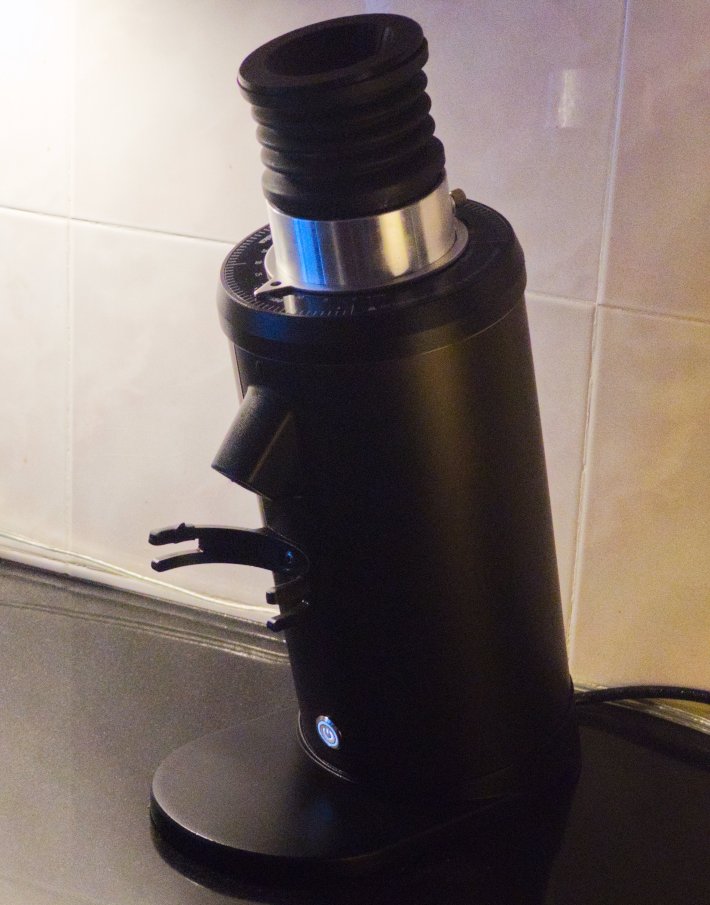
Before digging into the modding process, it’s worth noting that a good coffee grinder is more important to have than a good espresso machine. Most grinders you get cannot grind well enough to handle espresso. Being able to accurately adjust grind size to each specific bean (a tedious process known as “dialing in”) is crucial. The old standard entry level recommendation for home espresso was a Baratza Encore, and you can still get one of those for 50 bucks on Facebook if you look, but the enthusiast coffee market has entered into an aggressive arms race in the last few years.
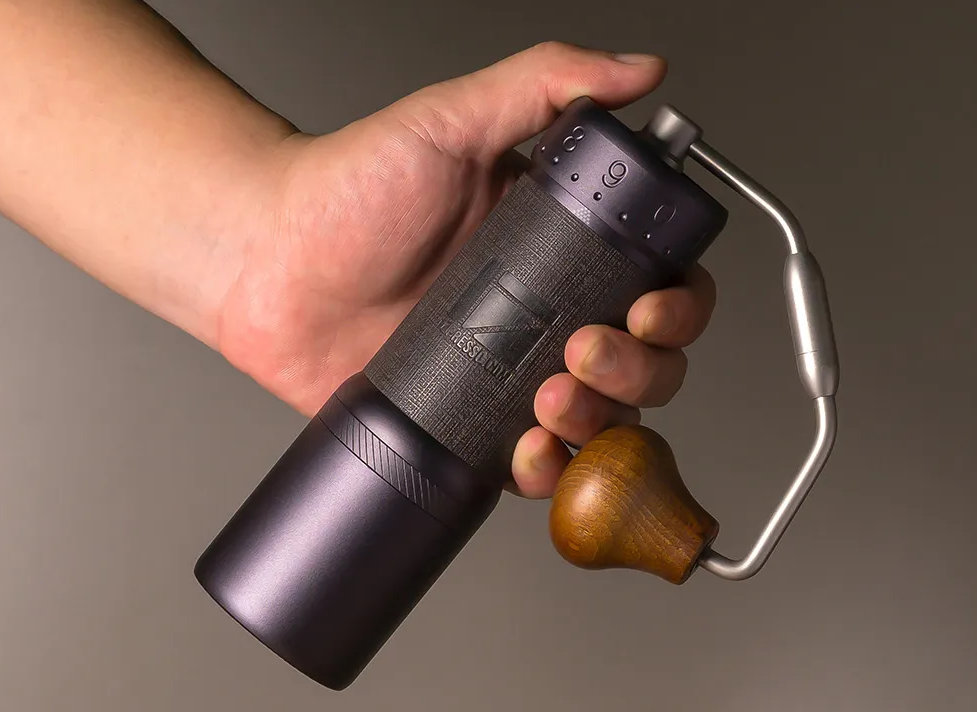
1Zpresso creates fantastic hand grinders now if you don’t mind a little manual labor, but I wanted something automatic. A nice facet of coffee culture is that coffee guys are often selling their gear to buy new stuff, so I was able to buy an older version of the DF64 grinder with a bunch of anti-clogging mods (necessary for the early models of the machine specifically) from a guy I met on an espresso Discord who had upgraded to a commercial model. It’s a beast of a grinder, weighing in at 15 pounds, and takes up about as much space on my counter as my Vitamix. He also offered to sell me some new, custom burrs for the machine, but I politely declined as I had not crossed that threshold where I am spending 180 dollars on burrs. To give you a hint of how fast this coffee world moves, since I started writing this blog, the DF54 has emerged on the scene, itself hitting an ideal 230 dollar sweet spot. I don’t regret buying my machine, but if I had to do it again I would seriously consider the smaller, lighter machine.
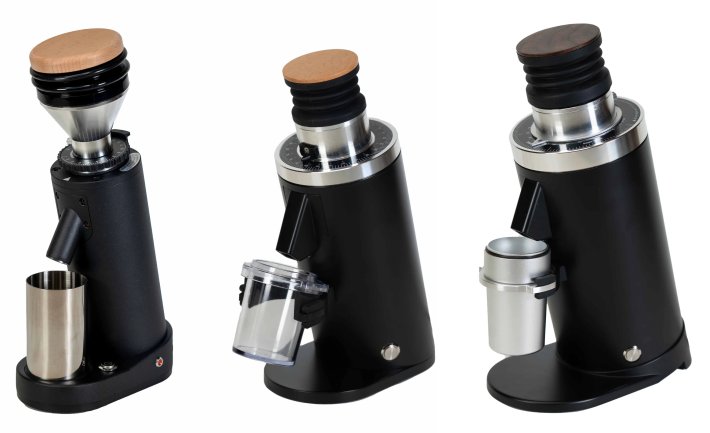
Circuits, Steam and Steel
I was finally able to buy a Gaggia Classic from a guy in a White Castle parking lot who I had met on Facebook Marketplace. Like me, he too had been contemplating pulling the trigger on the mod, but decided against it. And like the guy who sold me the grinder, he too had upgraded his machine, the Gaggia once again entering the secondhand ecosystem of Facebook Marketplace. One beautiful teal powder coating job later, and I was ready to dig into the world of DIY espresso machine hacking.
There are multiple ways to approach the Gaggiuino mod. You can either buy a standard PCB from an approved vendor like Peak Coffee or a full kit that has all the hardware you need to start. You can also do what’s called a lego build, where you buy the constituent components and solder them together. This is a lot of work, so I just went all out and bought the kit because I didn’t want to have to account for ordering dozens of tiny parts from Aliexpress (which the documentation lists). As of this writing there is a significant backlog to get kits from Peak Coffee, and it took me a few months to get mine, but this could potentially be alleviated in the future with more vendors. Plastic parts like housing for the PCB and screen enclosures are meant to be 3D printed, and Peak links to several vendors that offer this service for select models. I was fortunate enough to have several good friends who 3D print regularly, but there’s countless services for this.
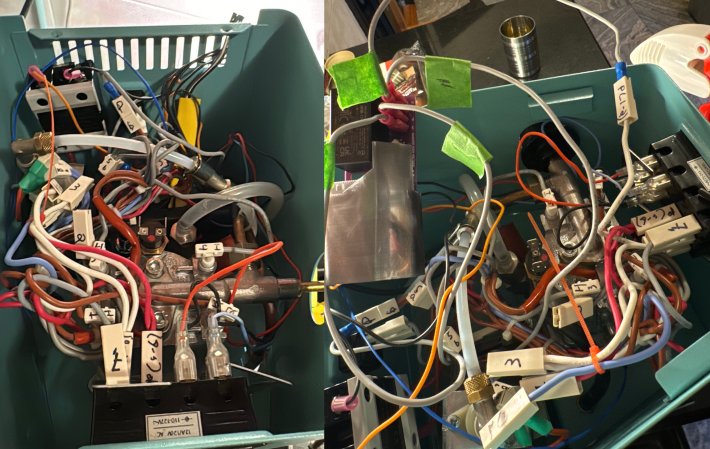
The Gaggiuino is not a mod for the faint of heart. There are currently no official video tutorials on how to do it, in part because there is a lot of variation between different versions of the Gaggia. You need very strict cable management, and it’s important to understand and follow every part of the documentation to the letter, particularly the wiring diagrams, because you are dealing with high voltage wiring, hot steam and electronics. While reassembling the machine after my powder coating, I accidentally switched two wires and did not quadruple check the diagram. After getting the mod setup, I turned the machine on for the first time, the screen booted up briefly and I heard a loud popping as a component fried on the circuit board. This was luckily not a project-ending error. I simply ordered a new part from Digikey, desoldered the old one, cleaned off the PCB and swapped the new chip in. Support for the Gaggiuino mod is community-based and takes place on the Discord. If you have difficulty, simply start a thread and the mods will help you through as best they can.
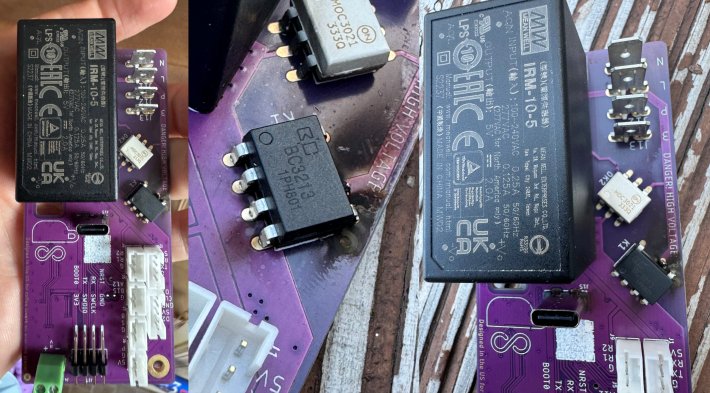
After a few afternoons mucking around inside my repainted 90s Gaggia Classic, I finally finished the mod and turned it on. The machine sputtered to life, and informed me that it was filling the boiler. I carefully dosed 18 grams of beans, mixed them in a small bowl with a moist spoon handle (this is called RDT, and most people use a tiny spray bottle), and ground them. I de-clumped the ground coffee, tamped it, and locked my bottomless portafilter into place. I selected a profile and flicked the switch. The machine hummed on and the pump started chugging away, slowly preinfusing the puck before ramping the pressure up and pulling roughly 36 grams of espresso.
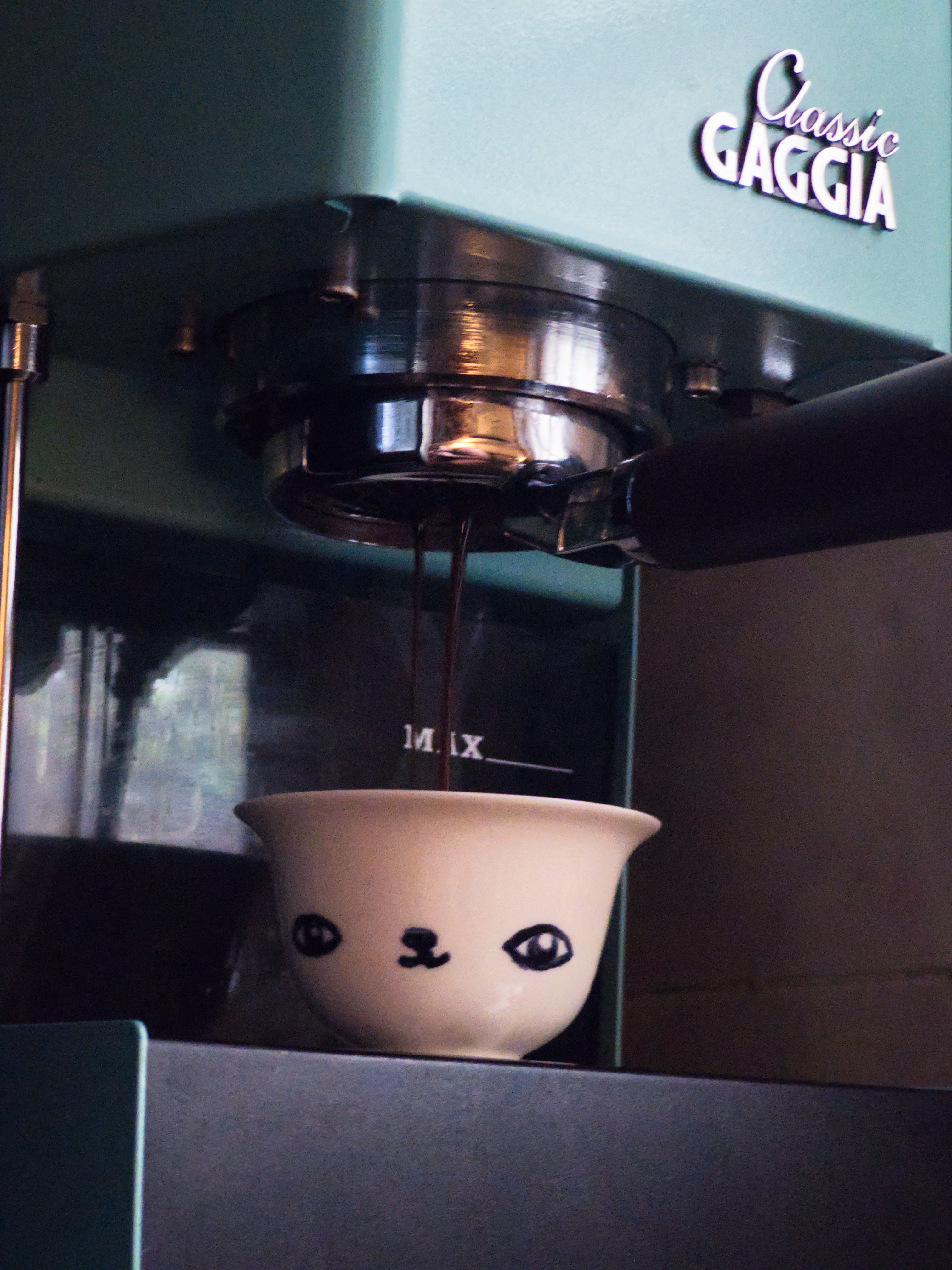
The mod allows for hardware scales to be installed inside the machine itself, so the machine will stop pulling the shot when it hits the precise amount of espresso you’ve asked for. If you don’t have scales installed, it can use what’s called “predictive scales” to estimate roughly when it should stop pulling the shot based on pressure and flow. I gave it a test and was blown away. Trying to get a drinkable shot with the stock Gaggia Classic was a bit of a nightmare, but without too much fiddling I had pulled something I would be proud to serve guests. To me it tasted like something out of a cafe. Maybe this was because I had pulled the shot in my house, or maybe it was because of the time I had taken researching the mod, learning to pull a shot and fiddling with wiring inside the machine. The transformation felt like magic, and that magic was topped only by watching my little Gaggia rapidly steam a cup of milk into a thick, beautiful froth very quickly. Espresso guys are restless gear freaks, but I see no reason to go further, to use my little seafoam friend for the foreseeable future to serve guests.

From Open-Source to Open-Core
It can be tempting to put a price tag on the Gaggiuino, saying that it transforms a lowly $300-$600 machine into something worth many thousands (particularly since the aforementioned decent starts at $3699) but Zer0-bit pushes against commercial comparisons. “I never put Gaggiuino against anything, it naturally grew into what it is today because I grew in terms of knowledge and met amazing people that helped with the growth as well,” he told me. The project started and largely has remained an open-source one, requiring community input at all stages. This changed while writing the piece, as Zer0 announced on Gaggiuino Discord that future development will switch to an open-core model.
“The decision to keep the code private stems from prolonged issues with scalping, which has been a significant challenge for the past year or so,” Zer0-bit said in a statement on the Gaggiuino discord. “It became increasingly necessary to take more decisive actions to protect the integrity of the project.” Practically, this means that, moving forward, development on the tiny 2.4” Nextion screen will no longer progress and all development will be for a new, larger screen platform. The existing internal PCBs will remain the same, and existing wiring will stay the same, but software will have to be enabled on the new screen at an approved vendor level. If you have a Gaggiuino already, you just need to get a new screen.
Though this model can be controversial, the move makes sense to me. The life of maintaining a large open-source project can take every waking moment of a person’s life, becoming a job on top of your job. I can see how frustrating it could be doing tech support for hardware you didn’t oversee that controls boiling water, hot steam and involves high-voltage electricity. So many things can go wrong in a build, I know this firsthand. But a part of me is saddened, a sentiment shared by Zer0-bit. “(To be honest) I'm not a fan of the transition,” he told me, “but I was put in the situation where I keep doing the hard work and others reap the benefits no matter what principles I wanted people to follow or I put the foot in the door myself.”
On the plus side, transitioning to a new model allows Zer0-bit to develop for the new screen platform, which seems larger and far easier to read. According to Zer0, the hardware is easier to develop for, and the new branch will be far easier to flash and update over WiFi. And the previews of the model shown off look slightly less like a frankensteined together concoction, and more like a machine purpose-built for the task. As soon as I can, I will update it.
Coffee Guy Nirvana
The worst information you can learn when you’ve spent several hundred dollars turning an espresso machine inside out is a doctor telling you that you should cut back on caffeine for a while. This happened to me during the writing process (I’ll be fine, don’t worry). It doesn’t bug me that much. The point of doing this wasn’t just reaching espresso guy nirvana, but rather to explore the edges of what is possible with home espresso and to share what I learned with others. I took something I bought in a White Castle parking lot for a few hundred bucks and turned it into something completely new. And even though I’m done, I still keep an eye out for cheap Gaggia Classics on Facebook Marketplace, sending them out to friends I know who have the itch. I’m excited to see what happens in the rapidly changing coffee world and how the Gaggiuino project develops. But for now, it’s time to step back a bit. I’ve achieved my end game.


